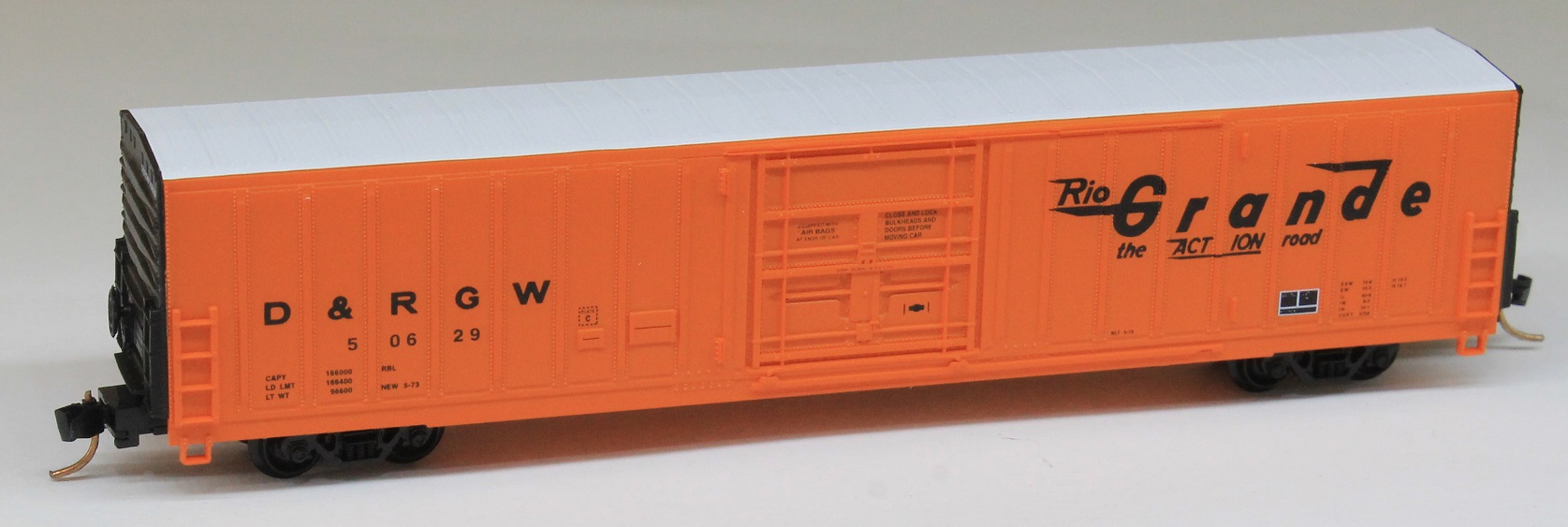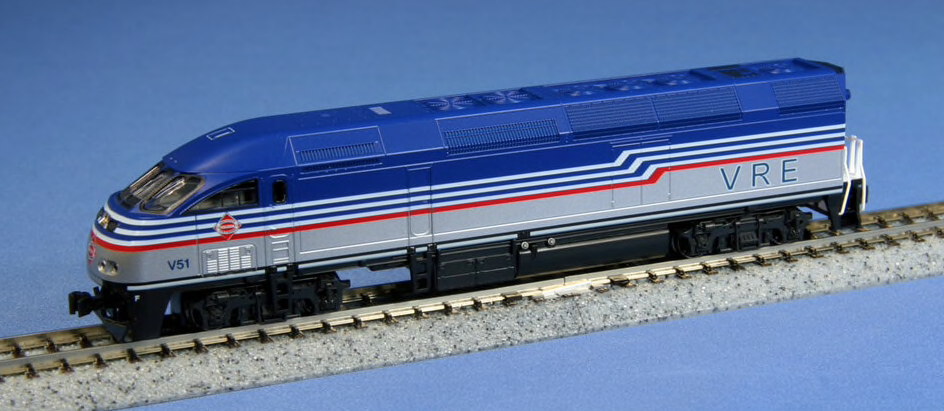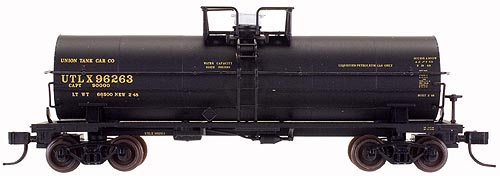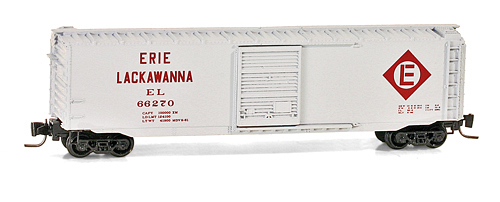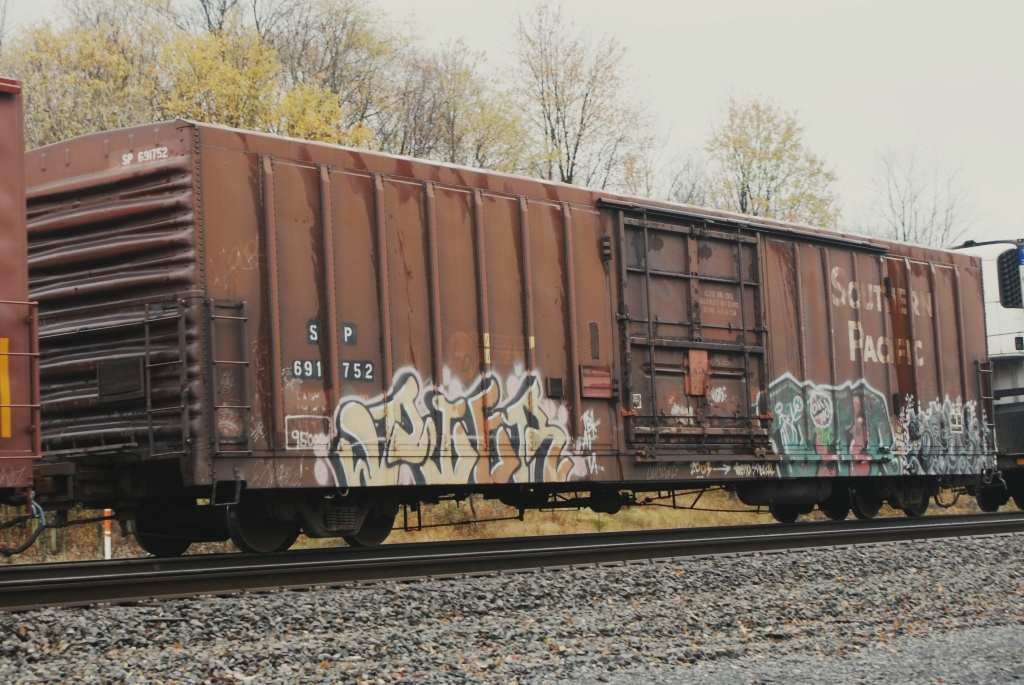Model Information: Red Caboose started production of this car in the 1990s. This is a fairly typical 2nd generation piece of rolling stock. Like other N Scale models from Red Caboose, this tooling is currently (2017) owned by Fox Valley. The Red Caboose releases supply the brake wheel as a user-applied detail which must be glued on. The couplers are attached to the trucks and the version we saw has MTL trucks and couplers, though these may have been an aftermarket modification. The detail and printing are good, but the underframe is typical Red-Caboose low quality in terms of lack of detail. Not that most people look at underframes, but these just seem like an afterthought.
Prototype History: Built by Pacific Car & Foundry (PC&F), these cars were delivered in either 10' 6" or 12' 0" wide door versions. First built in the mid-70s with production continuing into the early 80s, many cars are still in service today disguised in new paint and lettering due to changes in ownership.
These long box cars are typically found heading to and from breweries as they were designed to haul beer and other commodities that required the product to remain at a constant temperature during transit. This car could accomplish this without varying the temperature more than 1 degree.
These long box cars are typically found heading to and from breweries as they were designed to haul beer and other commodities that required the product to remain at a constant temperature during transit. This car could accomplish this without varying the temperature more than 1 degree.
Road Name History: The Denver & Rio Grande Western Railroad (reporting mark DRGW), often shortened to Rio Grande, D&RG or D&RGW, formerly the Denver & Rio Grande Railroad, was an American Class I railroad company. The railroad started as a 3 ft (914 mm) narrow gauge line running south from Denver, Colorado in 1870. It served mainly as a transcontinental bridge line between Denver, and Salt Lake City, Utah.
In 1988, the Rio Grande's parent corporation, Rio Grande Industries, purchased Southern Pacific Transportation Company, and as the result of a merger, the larger Southern Pacific Railroad name was chosen for identity. The Rio Grande operated as a separate division of the Southern Pacific, until that company was acquired by the Union Pacific Railroad. Today, most former D&RGW main lines are owned and operated by the Union Pacific while several branch lines are now operated as heritage railways by various companies.
In 1988, the Rio Grande's parent corporation, Rio Grande Industries, purchased Southern Pacific Transportation Company, and as the result of a merger, the larger Southern Pacific Railroad name was chosen for identity. The Rio Grande operated as a separate division of the Southern Pacific, until that company was acquired by the Union Pacific Railroad. Today, most former D&RGW main lines are owned and operated by the Union Pacific while several branch lines are now operated as heritage railways by various companies.
Brand/Importer Information:  Originally Red Caboose was a manufacturer of HO and N Scale model railroading items. It was located in Mead, Colorado, and was founded in 1990 by Leon Fairbanks.
Red Caboose manufactured highly accurate, well detailed N, HO, and O Scale freight cars and locomotives.
Originally Red Caboose was a manufacturer of HO and N Scale model railroading items. It was located in Mead, Colorado, and was founded in 1990 by Leon Fairbanks.
Red Caboose manufactured highly accurate, well detailed N, HO, and O Scale freight cars and locomotives.
Red Caboose closed its doors in January of 2015. Red Caboose N Scale has been sold to Fox Valley Models and HO was sold to InterMountain Railway. Many of the Red Caboose toolings have seen re-releases from Fox Valley since the acquisition. We just wish they would clean up the underframes. Red Caboose always went light on the details where they thought people wouldn't look.

Red Caboose closed its doors in January of 2015. Red Caboose N Scale has been sold to Fox Valley Models and HO was sold to InterMountain Railway. Many of the Red Caboose toolings have seen re-releases from Fox Valley since the acquisition. We just wish they would clean up the underframes. Red Caboose always went light on the details where they thought people wouldn't look.
Manufacturer Information: While they were in business, Red Caboose split its production runs between the US and China. Which models were produced where was a function of which body style and which run. Furthermore, which Chinese company was used for production is something we would love to find out.
Item created by: CNW400 on 2021-05-03 11:33:08. Last edited by baggedbird on 2023-06-05 21:24:20
If you see errors or missing data in this entry, please feel free to log in and edit it. Anyone with a Gmail account can log in instantly.
If you see errors or missing data in this entry, please feel free to log in and edit it. Anyone with a Gmail account can log in instantly.


